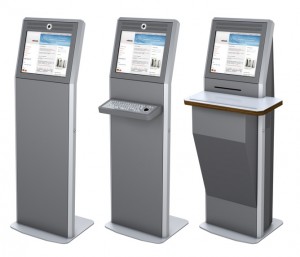In information technology, a kiosk (pronounced KEE-ahsk ) is a small physical structure (often including a computer and a display screen) that displays information for people walking by. More sophisticated kiosks let users interact and include touch screens, sound, and motion video. A number of companies specialize in creating multimedia kiosks.
A kiosk requires a simple user interface that can be used without training or documentation, and the hardware must be rugged and capable of operating unattended for long periods of time. Touch screens can provide some of these features because they enable a user to enter and display information on the same device and eliminate the need for keyboards, which are prone to break.
Classroom Solution

Now-a-days, virtual classrooms (Video conferencing) are booming. Brilliant knows this very well, so they provide institutes with the solutions like video conferencing facilities, integration with clickers etc.
Video conferencing helps anyone signed in into the system to access the lecture ongoing from anywhere.
Clickers
 Clickers are an interactive technology that enables instructors to pose questions to students and immediately collect and view the responses of the entire class. This is how clickers work
Clickers are an interactive technology that enables instructors to pose questions to students and immediately collect and view the responses of the entire class. This is how clickers work
- Instructors present multiple-choice questions (verbally or with presentation software or with the i>clicker software).
- Students click in their answers using remote transmitters, available at the bookstore (i>clicker, the system supported at Carnegie Mellon, uses radio frequency transmitters, which are more reliable than previous versions of this technology).
- The system instantly collects and tabulates the results, which instructors can view, save, and (if they wish) display anonymously for the entire class to see.
Clickers are used to answer form a group of people. Students choose the answer for a given question and choose the option and click the assigned button for that option. The system registers the time and answer for each user.
